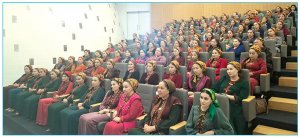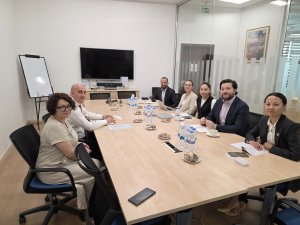The Department of Biotechnology of the International Science and Technology Park of the Academy of Sciences of Turkmenistan has received a copyright for the development of bionanocomposite material technologies based on blue-green algae (cyanobacteria).
As reported by “Turkmenistan: Golden Age”, the certificate was issued by the State Service for Intellectual Property of the Ministry of Finance and Economy of Turkmenistan.
The proposed development can be used for zoo- and phytomelioration of eroded sandy and desert lands in dry steppe and desert zones. It is designed to combat desertification, wind erosion and sand migration. This material can also be used as raw material for the production of building materials and biopreparations.
Altyn Rahmanova, Head of the Biotechnology Department of the International Science and Technology Park of the Academy of Sciences of the Russian Academy of Sciences, says:
- Mobile bare sands cause significant damage to the national economy, often filling up agricultural lands, rivers, reservoirs, canals, transport highways, irrigation structures and other objects. Therefore, the fight against wind erosion and sand stabilization are important tasks. We have proposed an effective way to combat desertification, which is based on the use of blue-green algae (cyanobacteria).
Cyanobacteria play an important role in soil ecosystems, participating in biochemical processes, accumulation of organic matter and nitrogen, destruction of minerals and distribution of elements. Their vital activity contributes to changes in the environment and the formation of soil, especially through the formation of various growths on its surface.
Turkmenistan is actively combating land degradation in accordance with the UN Convention to Combat Desertification and the National Action Program to Combat Desertification (NACDC), which includes reforestation activities.
The use of biotechnology to develop new materials is a promising and effective solution. Such technologies can be used in various areas of life, allowing for the creation of both small and large volumes of products, the source notes.













